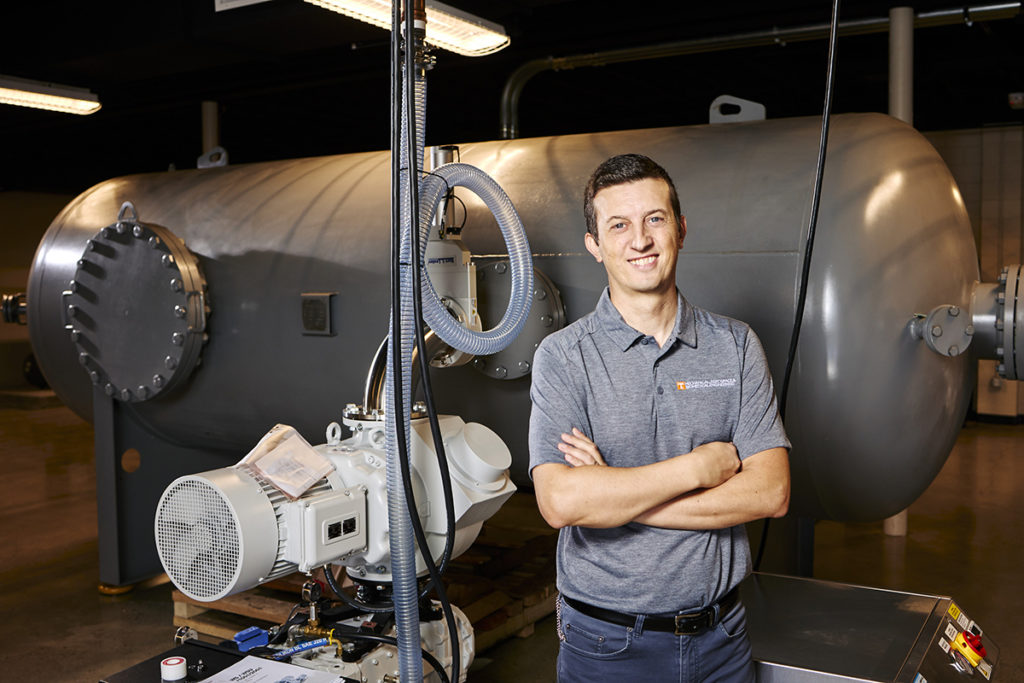
Assistant Professor Damiano Baccarella joined the mechanical engineering faculty in 2019 and immediately set to work building his research team and lab. The 2020 pandemic threatened to slow them down, but some good old Volunteer spirit kept wind in his hypersonic sails.
“My experience at UT has been absolutely great,” he said. “What I loved about UT since day one is the collaborative environment existing between faculty members and between faculty and staff. It really made me feel like part of a big family and never left alone to face difficulties.”
A stamp of approval on the national level added even more support. The Air Force Office of Scientific Research delivered a 2020 Young Investigator Research Program award to Baccarella and crew.
“The YIP award will give me the opportunity to test and validate the newly built tunnel on a very challenging problem of great interest for the Air Force and for the entire aerospace community,” he said.
The problem to be solved stems from thermochemical nonequilibrium, a phenomenon that occurs in hypersonic flows and complicates the ability to match wind tunnel data with actual flight conditions. The Tennessee High-Enthalpy Tunnel, the centerpiece of Baccarella’s lab, will be a productive new tool in better understanding nonequilibrium and allow ground testing to match flight testing. This, in turn, will enable better capabilities in hypersonic research at UT.
“I’ve been working on this type of pulsed hypersonic wind tunnel throughout my entire career, starting from my master thesis at the University of Pisa [Italy] back in 2006,” he said. “I designed similar tunnels at the University of Notre Dame and University of Illinois.”
Baccarella has designed and operated systems like this under a wide range of conditions, adapting them to a variety of research tasks.
“In the system I’m building at UT, I will exploit all the previous knowledge I accumulated to build a system with double the power and significantly enhanced capabilities compared to previous versions,” he said.
His lab’s ultimate purpose is to make high-enthalpy hypersonic research more accessible at an academic level outside of national laboratories that have limited access and higher cost. The design of the new tunnel allows for a more timely and cost-effective investigation.
“Novel diagnostics techniques can be developed and optimized in our tunnel at relatively low cost before committing to a full-scale test in a large facility,” said Baccarella. “In addition, this laboratory will provide unique training capabilities for the next generation of scientists and workforce for the expanding field of hypersonics.”
While it is a key element, the hypersonic wind tunnel is not the lab’s only feature. The team will also add facilities for material testing under high-temperature flow conditions.
“It will be certainly possible to transfer knowledge and equipment from one project to another in a synergistic manner to improve our overall capabilities,” said Baccarella.
This collaborative approach lights the way for exciting new opportunities for discovery and innovation at UT.